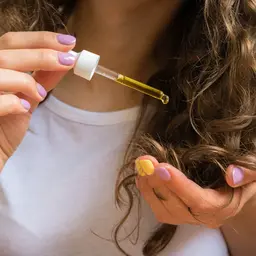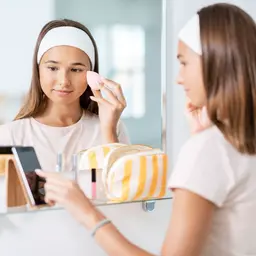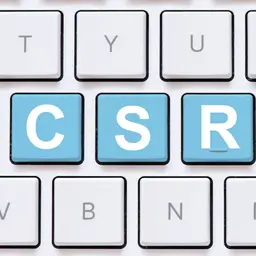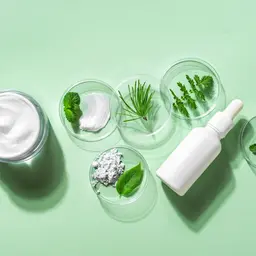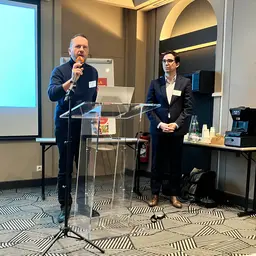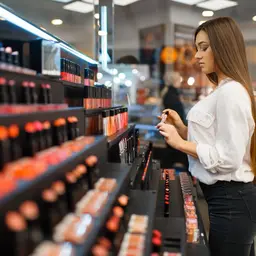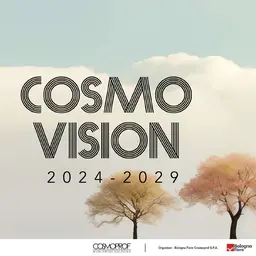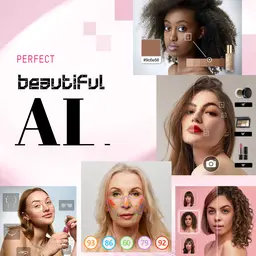
If you have a close look at the History of cosmetics, it is pretty easy to identify several periods corresponding to quite different practices. After the very beginnings, and then the industrialization of formulas and the contribution of Biology, new notions have just been introduced, marked by the impact of the environment and external influencers on the skin condition…
Initially, products were generally based on more or less miraculous recipes, and then they became industrial formulas. The ingredients were simple, the notion of actives did not exist, or they were associated with acknowledged scientific progress, like the discovery of vitamins. In the early 20 th century, beauticians and/or grand beauty ladies were in charge. Indeed, they often acted as guides, due to their – usually more intuitive than documented – knowledge of the skin’s physiology. It should be reminded that the notion of skin types, which is still very often used to develop beauty routines, was defined in the 1910s by Helena Rubinstein. Today, we know this notion does not correspond to the physiological reality, but it is still used as a reference.
Then, there was a period of time when Biology contributed a lot to cosmetics: it was the era when scientists started to assess the activity of certain molecules and, little by little, explain the mechanisms involved in the main phenomena related to the skin’s physiology. After a while, this led them to measure product efficacy. This period started in the 1970s, and it is still going on. That is when the notion of active principle started to spread, often by analogy with pharmaceutics, but quite fundamentally on the basis of knowledge that got increasingly more accurate, without following a therapeutic pattern. Indeed, the idea was not to treat pathologies, but to support an organ that had its own specific characteristics. The contribution of Biology was decisive and gradually became a unique way of thinking. A huge number of specialties were offered on the basis of the biological mechanisms within the skin to regulate its functions, its homeostasis, and, more generally speaking, aging, as if the skin’s biology was the same, whatever the genetic heritage and/or the conditions the skin lived in. Astronomical numbers of enzyme inhibitors, biological activators of all kinds, energy boosters, various effectors, functional molecules, peptides, all of different origins (biological, plant-derived, or synthetic), were then launched and invaded the market. Right now, many commercial specialties are still developed following this approach – not to say all of them.
However, pretty different notions have been introduced for a while. If we had actually observed that, when assessment techniques were developed based on Biophysics, environmental conditions played an essential role and represented a key factor in determining the skin’s characteristics, the notion of environmental impact was often overlooked. Today, a clear trend is growing, around the idea that these elements should be better taken into account.
Photoaging was the first process associated with aging to be clearly related to environmental conditions. The best way to interfere with this process is actually to just filter the radiation responsible for it, rather than activating such or such biological mechanism. Research on protection against blue light and infrared rays, which are topical concepts, is only but following the same approach.
Several teams have made progress on the effect of these mechanisms, as can be seen with this publication: Olay data shows skin care matters more the DNA . As part of this work, the research team showed that environmental conditions play a key role in determining the skin’s characteristics. In addition, at the last European Dermocosmetology Days , Laboratoires Clarins teams presented a study entitled ‘Impacts of short and repeated climate change on the differentiation and matrix remodelling of a reconstructed human skin model’.
Following a pretty different approach, Bérengère Fromy has been working on the ‘mechanical sensitivity and cutaneous vasodilatation’ interaction at CNRS (French National Centre for Scientific Research) since 2002. She has been trying to understand the skin’s defence mechanisms to efficiently fight against mechanic constraints. The cosmetics industry has taken interest in this work and the ability to assess the skin’s functional quality. Furthermore, she has been studying the influence of the skin’s viscoelastic properties on the microvascular adjustment capacity, despite mechanic constraints. The changes in these rheological properties that occur as the skin ages and in case of pathologies like diabetes, pave the way for very promising prospects.
From a more practical standpoint, just like every year, the students in the year 2017 Master’s in Cosmetology at Châtenay-Malabry, south of Paris, end their studies by presenting concepts and product ranges they developed as part of their training. Under brand ‘Seisoen’, one group encourages women aged 25-45 to adapt their skincare routine to the seasons. To this aim, four products resuming original marketing themes and formulated around specific, but common actives, can help meet these requirements ( Source: Expression Cosmétique 44 – March/April 2017- 48-49).
In addition, a few brands have been created lately, with the theme of climate cosmetics as a major positioning.
Although they are not that close to these ideas, the microbiome and pollution should be related to this concept of ‘external influencers’.
Technological innovation is likely to support this idea. Indeed, connected objects (IoT), can now achieve outstanding things. For example, the Wayskin sensor , a simple accessory, provides personalized tips according to the skin’s specificities, but especially to the user’s environment. The device is fitted with sensors specifically adapted to the skin, a humidity sensor, and a UV ray detector. Combining the analysis of the skin and environmental factors makes it possible to get a thorough diagnosis.
A few applications have already been developed to this end: Ioma, with the UV index, and Romy, although this one is not that clear. In the same vein, you have probably noticed the MiLi Moisture Meter by H2O Beauty , which has just been released. This tiny ‘device’, offered as a gift if you buy one of the brand’s products, makes it possible for the user to measure their own skin’s hydration level in real time and to adjust the cosmetics offering accordingly.
Here are a few elements that should show us that there are ‘environmental cosmetics’, apart from these ‘biological cosmetics’, which have received all the attention for several decades. Would these ‘environmental cosmetics’ not be the real solution to personalize products? Indeed, what changes the most, the skin’s biology or its environment? Are we going to keep offering the same cream, with the same active, and in the same quantity for everyone, all over the world, for long? ‘Instrumental cosmetics’ follow the same trend, since we now know that ‘external influencers’ like the light, the cold, mechanics, etc., are as interesting as ‘actives’.
Research for new substances with isolating and balancing properties, as well as protective properties against the wind, the cold, pollution, radiofrequencies, etc., without necessarily using Biology, would create a new, just as fascinating era. What is going on with the microbiome follows this approach: that of trying to look at things differently.
But, does that really come down to making cosmetics differently? Fundamentally no: the crux of the debate remains the skin. Those that have taken regular interest in these issues know that, at the end of the day, these different concepts are only complementary and often interwoven. However, as regards the positioning and storytelling – a central issue for all those that have something to do with product development –, it would be a new paradigm.
A while ago, I had already allowed myself to point this out, without anyone really listening, in two different posts:
Towards environmental cosmetics?
and
Connected beauty… continued!
… but that is not the point.
Anyway, it is never too late to get the job done!!!!
Jean-Claude Le Joliff

